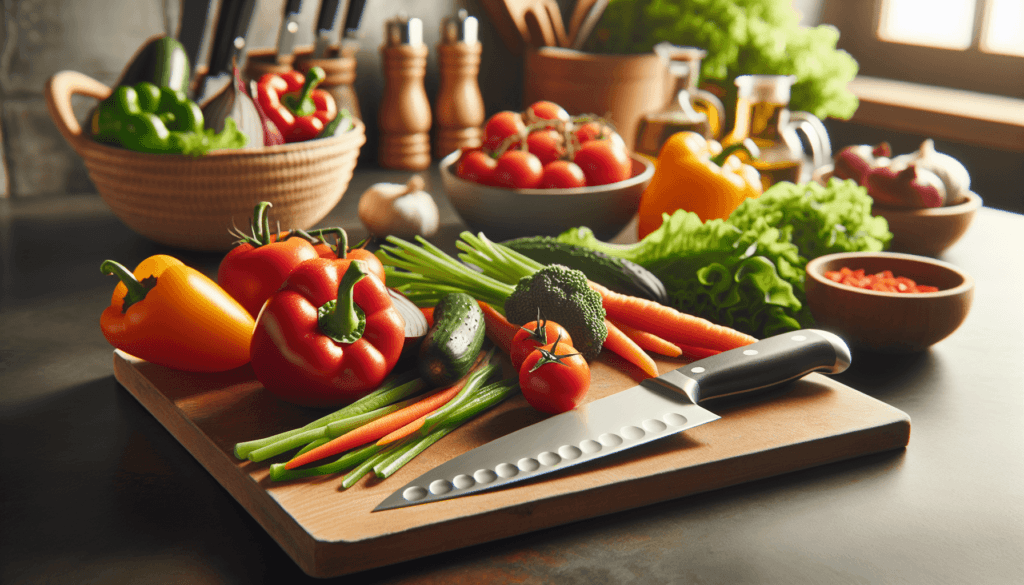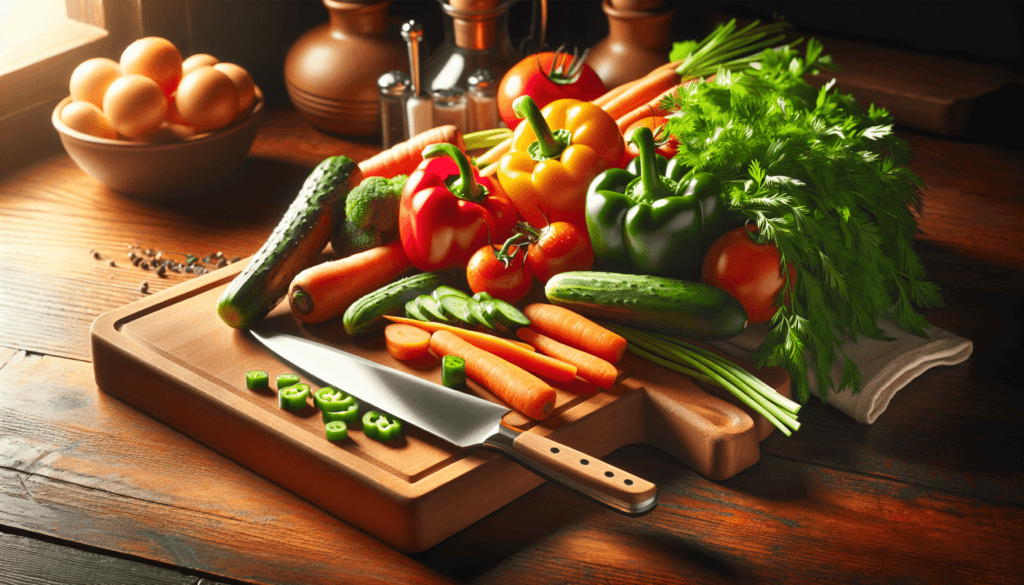Have you ever stood in your kitchen and wondered, “Where do I start if I want to cook?” If that question has crossed your mind, you’re not alone, and the good news is that cooking is an adventure worth diving into. Whether you’re seeking to impress at dinner parties, eat healthier, or simply find joy in creating something delicious, cooking opens up a world of possibilities.
Let’s unlock the steps and insights you need to navigate the kitchen effectively.
Table of Contents
Introduction
Cooking at home has many advantages, from controlling your ingredients and knowing exactly what’s in your food to saving money and personalizing your meals. Think of it as a journey where every step, ingredient, and technique adds to the joy and mastery of creating something uniquely yours.
The Joys and Benefits of Cooking
Cooking is more than a necessity—it’s an art form and a practical skill with a myriad of benefits. Understanding these advantages can spark the motivation to start your cooking journey.
1. Health Benefits: Home-cooked meals generally contain fewer calories, more nutrients, and fewer processed ingredients than restaurant or fast food options.
2. Financial Savings: Preparing food at home is usually cheaper than dining out. Bulk buying and using leftover ingredients creatively add to the savings.
3. Mental Well-being: Cooking can be therapeutic, providing a sense of accomplishment and creativity. It also serves as a great way to bond with family and friends.
Understanding the Basics: Where Do I Start?
Embarking on your cooking journey doesn’t have to be daunting. The key is to start with the basics and gradually build your skills and knowledge. Begin with understanding fundamental terms, techniques, and tools that often appear in recipes.
Essential Kitchen Tools and Equipment
Before you begin, ensure your kitchen has the essential tools. You don’t need a state-of-the-art kitchen setup; a few basic items will suffice for most recipes.
1. Cutting Board and Quality Knives: A good cutting board and a sharp chef’s knife are non-negotiable. These are crucial for efficient and safe food preparation.
2. Pots and Pans: Start with a medium-sized pot, a large pot, a frying pan, and a baking sheet. These will cover most of your cooking needs.
3. Measuring Cups and Spoons: Accurate measurements are critical, especially in baking and following recipes.
4. Mixing Bowls: A set of mixing bowls in various sizes can help with preparation and storage.
5. Spatulas and Whisks: Essential for mixing, flipping, and baking.
Basic Cooking Skills
Once your kitchen is set up, focus on mastering essential cooking skills. These foundations will make the more complex techniques easier to handle later on.
1. Knife Skills: Learn to chop, dice, julienne, and mince safely and efficiently.
2. Seasoning: Understand the basics of seasoning with salt, pepper, and herbs. Know how to taste and adjust flavors.
3. Cooking Methods: Get comfortable with basic methods such as boiling, steaming, sautéing, roasting, and grilling.
4. Recipe Reading: Learn to read and follow a recipe methodically. Pay attention to ingredient lists and instructions.
Starting Small: Simple Recipes for Beginners
Start with simple, foolproof recipes that build confidence and essential skills.
1. Breakfast Dishes: Scrambled eggs, pancakes, and overnight oats are great starting points.
2. Salads and Sandwiches: These require minimal cooking and teach ingredient pairing.
3. Pasta Dishes: Simple pasta recipes help you get used to timing and seasoning.
Example of a Simple Recipe
Let’s walk through a recipe for Spaghetti Aglio e Olio, a classic Italian dish that’s easy to prepare and requires few ingredients.
Ingredients:
- 200g spaghetti
- 4 cloves garlic, thinly sliced
- 1/4 cup extra virgin olive oil
- 1/4 teaspoon red pepper flakes
- Salt and pepper to taste
- 2 tablespoons fresh parsley, chopped
- Parmesan cheese for garnishing (optional)
Instructions:
- Boil the spaghetti in salted water according to the package instructions. Reserve 1/2 cup of the pasta water before draining.
- While the pasta cooks, heat olive oil on medium heat in a pan. Add the garlic slices and red pepper flakes.
- Sauté until the garlic is golden brown, being careful not to burn it.
- Add the drained spaghetti to the pan and toss to coat. If the pasta seems too dry, add the reserved pasta water by the tablespoon until you reach the desired consistency.
- Season with salt and pepper, garnish with parsley, and top with Parmesan if desired.

Venturing Deeper: Exploring Various Cuisines and Techniques
Once you’re comfortable with basic recipes, it’s time to explore different cuisines and cooking techniques. This phase is where your personal preferences and creativity truly begin to shine.
Experimenting with Global Cuisines
Exploring cuisines from around the world can introduce you to new ingredients and techniques, broadening your culinary horizons.
1. Italian Cuisine: Mastery of pasta dishes, risotto, and savory sauces.
2. Asian Cuisine: Explore stir-fries, sushi, and dumplings.
3. Mexican Cuisine: Learn to make tacos, enchiladas, and fresh salsas.
4. Indian Cuisine: Dive into curries, dosas, and spiced rice dishes.
Intermediate Cooking Techniques
With a solid understanding and practice of basic skills, you can begin to delve into intermediate techniques that will elevate your cooking.
1. Braising and Stewing: Ideal for making tender, flavorful meats and vegetables.
2. Baking: Start with simple bread and progress to more complex pastries and cakes.
3. Sous Vide Cooking: This slow-cooking method involves vacuum-sealing food and cooking it in a water bath at a precise temperature.
4. Advanced Knife Skills: Learn to debone poultry, fillet fish, and handle more intricate cuts.
Becoming a Confident Home Chef
As you become more comfortable, take initiatives such as meal planning and creatively using leftovers to optimize your cooking efforts.
Meal Planning and Prep
Meal planning simplifies the cooking process, reduces food waste, and ensures you maintain a balanced diet.
1. Plan Weekly Menus: Outline meals for the week, considering your schedule and ingredients on hand.
2. Batch Cooking: Prepare larger quantities and store them for future use. Soups, stews, and grains freeze well.
3. Organize Ingredients: Strategically plan your grocery shopping to ensure you have all necessary components.
Using Leftovers Creatively
A true testament to your cooking prowess is how well you utilize leftovers. Transform them into delightful meals and snacks.
1. Reinvent Dishes: A roast chicken can lead to sandwiches, soups, and salads.
2. Ingredient Reuse: Leftover vegetables and grains can become a hearty stir-fry or a nourishing soup.
Example of Leftover Magic: Fried Rice
Transform leftover rice and vegetables into a delicious fried rice.
Ingredients:
- 2 cups leftover cooked rice
- 1 cup mixed vegetables (carrots, peas, bell peppers)
- 2 eggs, lightly beaten
- 2 tablespoons soy sauce
- 1 tablespoon sesame oil
- 2 cloves garlic, minced
- Green onions for garnish
Instructions:
- Heat sesame oil in a pan over medium heat. Add garlic and sauté until fragrant.
- Push the garlic to the side and pour in the beaten eggs. Scramble until cooked.
- Add the leftover vegetables and rice, stirring to combine.
- Pour in the soy sauce and cook until everything is heated through and well-mixed.
- Garnish with green onions and serve.

Troubleshooting Common Cooking Challenges
Every cook encounters challenges. The key to overcoming them is understanding potential pitfalls and knowing how to address them.
Common Issues and Solutions
1. Overcooked Meat: Rest the meat before serving and use it in a saucy dish to restore moisture.
2. Undercooked Vegetables: Return them to the pan or microwave them with a splash of water until they reach the desired tenderness.
3. Too Salty: Balance overly salty dishes with acidity (lemon juice, vinegar) or sweetness (sugar, honey).
4. Baking Errors: Follow recipes carefully, check oven temperature accuracy, and use the correct measurements.
Seeking Help and Inspiration
When in doubt, numerous resources are available to assist you.
1. Cooking Classes: Many communities offer cooking classes for all skill levels. These provide hands-on experience and personalized guidance.
2. Online Resources: Websites, YouTube channels, and cooking blogs can be invaluable resources. Follow credible and experienced chefs to ensure reliable guidance.
3. Cookbooks: Invest in a few beginner-friendly cookbooks. These offer structured, step-by-step instructions and tips.
Advanced Cooking Adventures
Your journey doesn’t have to stop once you’ve mastered the basics. Pushing the boundaries of your culinary skills can be even more rewarding.
Perfecting Techniques and Presentation
1. Mastering Sauces: Elevate your dishes by learning classic sauces like béchamel, hollandaise, and reductions.
2. Plating and Presentation: Experiment with plating techniques to enhance the visual appeal of your meals.
3. Wine and Food Pairing: Understand how different wines complement various dishes to enhance your dining experience.
Cooking for Special Dietary Needs
Consider branching out into specialized cooking to accommodate dietary restrictions or preferences.
1. Vegan and Vegetarian Cooking: Explore plant-based recipes and learn to make satisfying, nutritious dishes.
2. Gluten-Free Cooking: Familiarize yourself with gluten-free grains and flours to create enjoyable, safe meals for those with gluten intolerance.
3. Allergy-Friendly Cooking: Adapt recipes to be free of common allergens, ensuring everyone at the table can enjoy safely.
Hosting and Entertaining
Impress friends and family by hosting gatherings and perfecting your hosting skills.
1. Themed Dinners: Organize dinners with a theme, such as Mediterranean night or BBQ fiesta.
2. Potlucks: Encourage guests to bring a dish, allowing for a diverse spread without putting all the cooking on your shoulders.
3. Brunches and Breakfasts: Master a few brunch staples like quiches, frittatas, and fresh pastries.
Future Directions and Implications
Cooking is an ever-evolving skill. As you gain more experience, consider how your journey can continue and expand.
Predictions for the Culinary World
The food and cooking landscape is always changing. Here are some trends to watch:
1. Sustainability: Expect a greater emphasis on sustainable and locally sourced ingredients.
2. Technological Integration: Kitchen gadgets and smart technology will continue to evolve, making cooking more accessible and efficient.
3. Health-Focused Trends: Look out for trends emphasizing whole foods, plant-based eating, and functional foods that promote health benefits.
Implications for Society
Cooking not only impacts you personally but also has broader societal implications.
1. Cultural Exchange: Exploring various cuisines promotes cultural understanding and appreciation.
2. Health and Wellness: Home cooking contributes to healthier populations by reducing reliance on processed foods.
3. Economic Impact: Popularizing cooking can support local agriculture and small businesses.
Conclusion
To summarize, embarking on your cooking journey starts with understanding and mastering the basics—essential tools, fundamental skills, and simple recipes. As you progress, exploring various cuisines, perfecting techniques, and even accommodating dietary needs can elevate your cooking to new heights. Finally, the broader implications of cooking extend beyond personal satisfaction to cultural understanding, health, and economic support.
As you reflect on your budding passion for cooking, consider the possibilities it opens in your life. What culinary adventure will you embark on next?
Embrace the journey, and remember—every great chef started exactly where you are. Keep experimenting, learning, and enjoying the wonderful world of cooking!
For more how-tos, tips, and recipes, explore other parts of this site and uncover a wealth of knowledge to keep you inspired in the kitchen.
